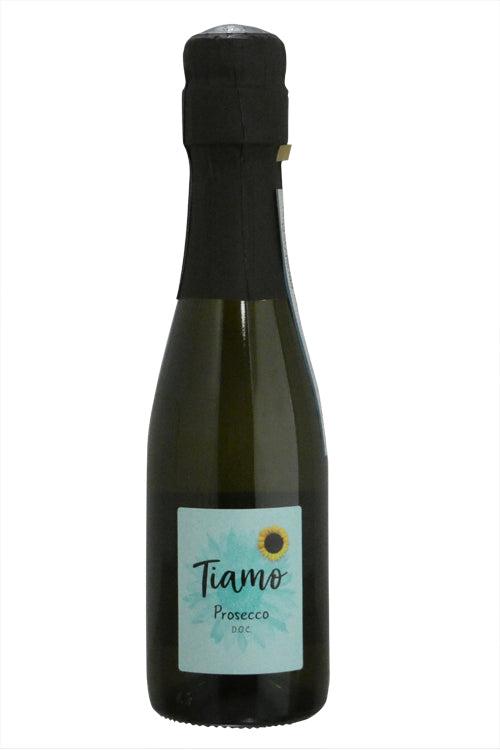1
/
of
1
TIAMO PROSECCO EXTRA DRY N/V - NV (187ml)
TIAMO PROSECCO EXTRA DRY N/V - NV (187ml)
Regular price
$5.99
Sale price
$5.99
Regular price
$5.99
Unit price
/
per
Availability:
29 In Stock
$25 Shipping on Orders +$299
Couldn't load pickup availability
Share :

- varietal
- Region
- Sub - Region
- Type
- Reviews
A pale and light grape indigenous to northern Italy that makes one of the countries most popular sparkling wines. Most Prosecco is made in an extra extra dry, or off dry, style offering fruity aromas of confected pears and peaches. A small percentage are made in a dry Brut style offering bracing green apple and citrus fruit. Since the 2009 vintage the Prosecco zone in the Veneto region was elevated from DOC to DOCG status, joining the ranks with the likes of Barolo, Chianti and Brunello Di Montalcino. At the same time the grape was renamed from Prosecco to Glera. Now anything made outside of the region must be labeled Sparkling Glera, offering extra protection for the zone's 5,000 or so small producers. Most of the regions production (roughly three quarters) is made in a spumante or fully-sparkling style. The rest made frizzante (semi-sparkling), and a tiny amount (less than 3%) is reserved for making still wine, most of which is consumed domestically.
Located in north east Italy, Veneto is one of Italy’s major wine regions. Pinot Grigio and Gargenega are the two most popular white varieties and account for most of the region's still wine. Meanwhile, Prosecco, made in the hills of Conegliano, is responsible for the country’s most popular sparkling wine. Tucked away in the foothills of the Lessini Moutains north of Verona, Valpolicella and Amarone della Valpolicella are responsible for making some of the country’s most famous fine wine.
The Prosecco Superiore zone sits tucked in an amphitheater like valley between the towns of Valdobbiadene and Congeliano. Little more than a hours drive north from Venice the picturesque rolling country side forms the foothills of the imposing Dolomite mountain range which are just in view on the horizon. The moderate continental climate provides ideal climate allowing the grapes to ripen slowly, while retaining acidity, over the summer until a relatively late harvest in October or even early November. The 260 acre hillside vineyard called Cartizze is referred to as the Grand Cru of the region offering some of the regions richest examples. While serving as a fine aperitif, their medium sweet level of sweetness and pronounced nose of ripe peaches and nectarines make them a great accompaniment to desserts and sweet pastries, as well as mildly spiced savoury dishes.
Sparkling wine is a wine with high levels of carbon dioxide in it making it bubble. The carbon dioxide is a result of natural fermentation, either in a bottle or a specially designed tank, or as a result of carbon dioxide injection.Sparkling wine is usually white or rosé but there are many examples of red sparkling wines. The sweetness of sparkling wine can range from very dry "brut" styles to sweeter "doux" varieties.When one thinks of sparkling wine they usually think of Champagne, but this wine is exclusively produced in the Champagne region of France and many sparkling wines are produced in other countries and regions. Most countries reserve the word Champagne for a specific type from the Champagne region of France. The French terms "Mousseux" or "Crémant" are used to refer to sparkling wine not made in the Champagne region. German and Austrian sparkling wines are called Sekt. The United States is a significant producer of sparkling wine with producers in numerous states. Recently the United Kingdom, which produced some of the earliest examples of sparkling wine, has started producing sparkling wines again.


